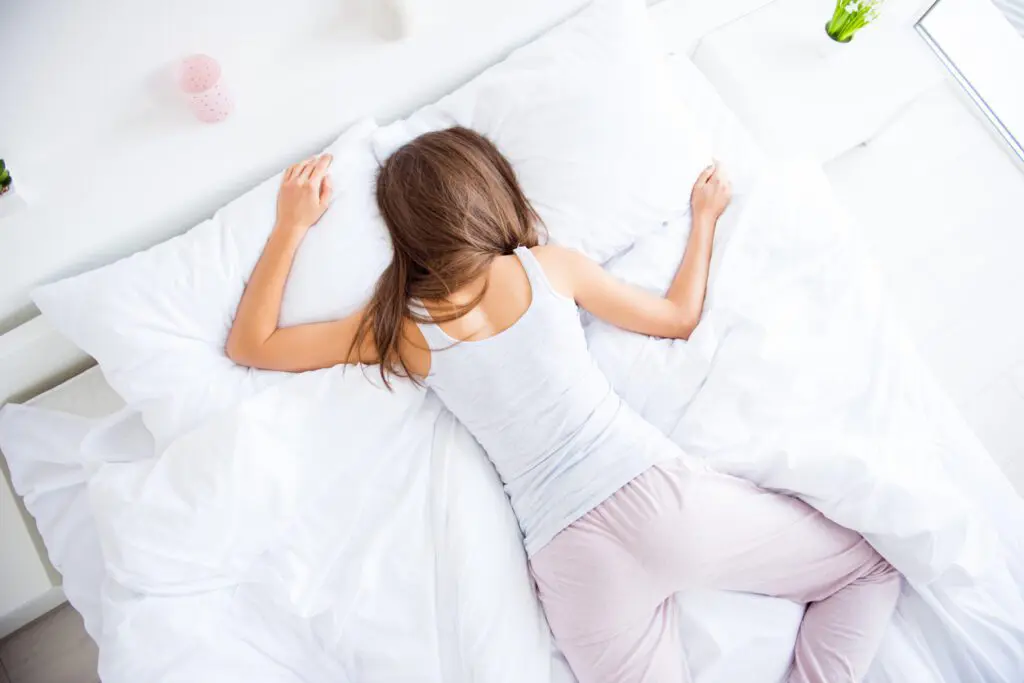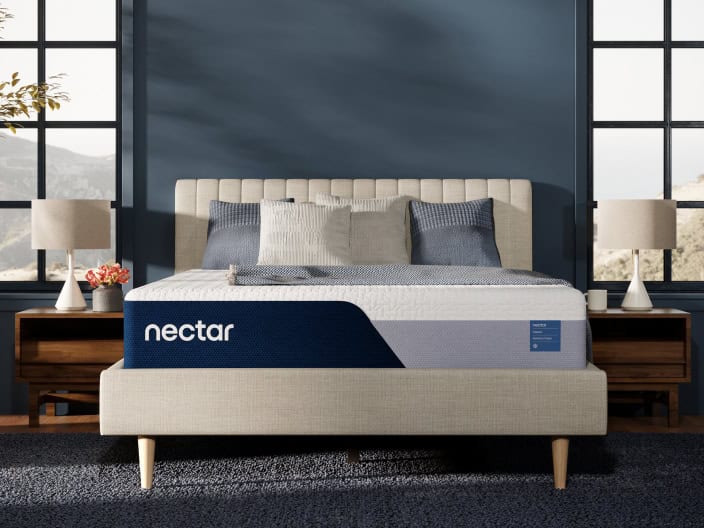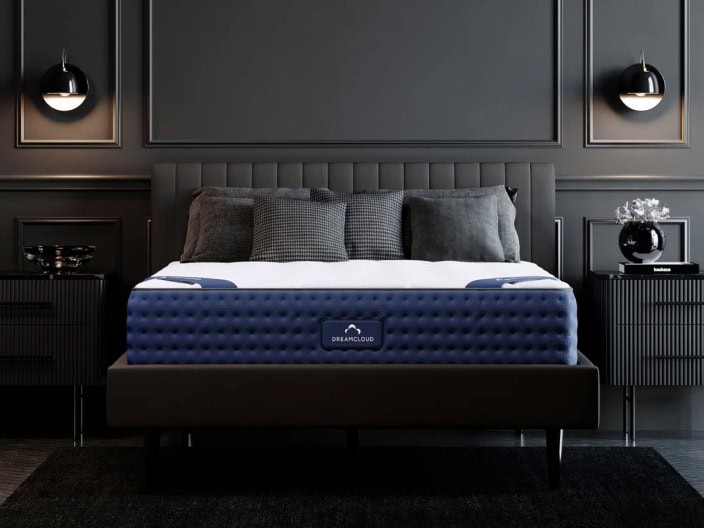What Is the Best Thread Count for Sheets
Share
Fact checked
Reviewed by experts
Updated
December 27, 2022
Quick read
7 mins to read
List of Content
If you are shopping for new sheets, you have gone through a couple of them before you can understand what you need. While exploring other features, you might have come across thread count and wondered what is thread count and what will be the best thread count for sheets? Well, you are not the only one to worry about it. Most people are unaware of the importance of a thread count.
They might know which material they should choose, but what thread count is best for sheets could still be a mystery to them. So, what is an ideal or good thread count for sheets? Read on to know why it matters and how you can identify bed sheets thread count for yourself.
What Does Thread Count Mean?
Thread count is the number of threads woven into a single square inch of fabric. This thread count measures the tightness of the fabric. It is calculated by counting the horizontal threads (weft) and vertical threads (waft) to count the total number of threads.
A thread count in layman language is used to indicate the feel and softness of the fabric. A low thread count indicates that the quality of the sheet isn’t that great. These sheets are not up to mark and are not soft on the skin. On the other hand, high thread count sheets are the indication that these sheets are better in terms of look, feel, and softness.
Although a thread count is a primary way to measure the sheet’s quality, other things can determine the same.
What Is the Best Thread Count for Sheets?
A high-quality thread count for sheets is in a range that falls between 200-800. These sheets will be soft and comfortable. There isn’t a fixed number of thread counts, but you can find quality and comfortable sheets in the above-mentioned range. The thread count also varies from the fabric used to make the sheets, as different fabrics have different properties and features.
Any sheet below the thread count of 200 doesn’t qualify for a high-end sheet. Not just the type of fabric, but the type of weave also makes a lot of difference. Now you might be thinking about what kind of weaves. There are primarily two types of weaves: Sateen and percale.
Percale weave is also known as plain weave, and it is the most common type of weave that you will see in most sheets. High-quality percale weaves are usually under 180-200 weaves. On the other hand, Santeen has a much tighter weave, and hence it has a thread count of 200-250.
Let’s explore thread counts of other fabrics available in the market.
| Fabric Best | Fabric Best |
|---|---|
| Egyptian Cotton | 300-400 |
| Cotton | 200-400 |
| Linen | 180-200 |
| Bamboo | 300-500 |
| Percale | 180-200 |
| Santeen | 200-250 |
There is no doubt that cotton is the best material for sheets. The best thread count for cotton bed sheets is between 300-400. But there are other types of sheets available in the market whose quality is not measured in thread count. Let’s have a look at such fabrics:
Silk
Silk fabrics are measured in momme. Momme is a measure of weight in pounds in a piece of silk that’s 45 inches by 100 yards. So the ideal momme of a good silk sheet would fall in the range of 17-22 momme.
Microfibre
Microfiber fabrics are woven from fibers made from wood pulp, nylon polymers, or polyester. These sheets are measured in grams per square meter (GSM). A fine quality of microfiber sheets would fall in the range of 90-120.
Jersey
Jersey is a type of knitting that sometimes uses cotton, and for this reason, the weight of these sheets might vary depending on the fabric used. The quality of a Jersey sheet is said to be fine if it is around 150 GSM.
Flannel
Bedsheets are also woven from flannel fabric. These bed sheets are said to be of fine quality if they fall in the range of 170 GSM. These sheets, however, are lighter in weight and are more breathable. There are lighter flannel sheets available in the market, too.
Is a Higher Thread Count Better?
The highest thread count sheets are generally preferred more as they are assumed to be of fine quality. However, it might not be entirely true. As discussed earlier, the fitness of a sheet is measured from various factors, including the weave, material, yarns used, and craftsmanship.
One thing to note is that some companies or manufacturers will double the thread count by using double or triple ply counts. This is the reason you should not decide the quality of a sheet by just looking at the thread count.
Although a sheet with a thread count of 400 will have a better feel than a sheet with a thread count of 200. Keep in mind that only a thread count isn’t the definition of a high-quality sheet. The fabric and the making also determine the quality.
In some cases, a low thread count can be a good feature. Materials like linen do not have a high thread count. Their usual thread count ranges between 80-140. If the thread count increases, the sheet might feel heavy and less breathable.
It all comes down to considering more features than just thread count. Make sure you check out the other features as well, or when in doubt, you can always get in touch with the salesperson.
When Does Thread Count Matter?
As mentioned earlier, not all sheets can be measured in thread count. So, a thread count only matters when it is a cotton bedsheet with single-ply weaves.
Let’s have a look at where you should completely avoid the thread count.
Polyester or blends
Polyester blends are artificial fabrics and can have thinner weaves and increase the thread count. These thread counts can be in thousands which again does not mean these sheets are of great quality. Why? Because some manufacturers are coming up with thinner weaves solely to increase the thread count.
You’ll find polyester sheets with 1400 thread count or more, but these are not the top-performing sheets. If you are looking for a high-quality sheet in polyester, you should consider them anyway, as they are wrinkle-free, stronger, and less expensive than cotton. You’ll find comfort in lower thread count with all these features, but it won’t be the same as you get in natural fibers.
Multiple ply yarns
The latest marketing gimmick has influenced marketers to use 2 or 3 ply to double or triple the thread count. Meaning, they produce sheets with high or double thread count, but this does not mean the sheets are worth it. The quality also depends on the durability, feel, and comfort of the sheets. Make sure you ask around the features, too, and not just go for the thread count.
Linen & silk
Linen is a different material than cotton, and linen having a higher thread count might not be a great thing. Why is that? Well, linen sheets with a higher thread count can become heavy and less comfortable. While a higher thread count might make the sheets comfortable, it will be the opposite for linen and silk. Moreover, silk sheets are not measured in thread count. So you see, there is no point in looking out for a thread count in silk sheets.
Flannel
Although these sheets are made from cotton and other fabrics, you won’t see any thread count in these sheets. The reason is flannel sheets are sold by fabric weight. So the thread count won’t be the ideal way to check for the quality of flannel sheets.
What Qualities Make for a Good Bed Sheet?
Now that you know, there are other factors that define the quality of a sheet. You should take a look at the sheet’s fiber, weave pattern, and staple length.
Fiber
Sheets are made from different fibers – cotton, bamboo, linen, microfiber. Etc. The type of fiber affects the sheet’s life, quality, comfort, maintenance, and feel. Some of the strong fabrics are bamboo, linen, and Egyptian cotton. These fabrics are durable and more comfortable than others. Choosing which fiber sheets you want also depends on your personal preference.
You might like the touch and feel of satin or silk sheets or the durability of linen, but be sure to look for other properties of fiber before going ahead with the ones you prefer. Who knows, you might end up finding a much more comfortable fiber?
Weave
After the fiber, it’s all about the weave. A weave is a way a weft and warp are interlocked together. You’ll find different weaves available in the market. These different weaves can affect the look and feel of a sheet. The most common and durable weaves are santeen and percale.
Percale weaves are more breathable and look crisp. These are great for cold weather and will keep you warm. Santeen, on the other hand, are softer and luxurious weaves that will keep you much warm as compared to percale weaves.
So now you know how to find a sheet that can keep you warm and cozy during winters.
Staple length
Staple length is the length of the fibers that are used to create a fabric. The common staple lengths are long, short, and extra-long. The softness of the fabric depends on the longness of the fiber. You’ll find extra-long staples in high-quality sheets as they are more durable, smoother, and softer. Short staples, on the other hand, do not make comfortable and durable bed sheets.
So, if you get a chance to check the staple length of sheets, go for extra-long staples as these sheets won’t disappoint you at all.
The Final Word
Now that you know what is a good thread count for sheets, finding the right sheet won’t be a problem for you. Keep in mind that thread count for bed sheets can change according to the fabric and weave! We hope this sheet thread count guide will help you to understand how to define a sheet’s quality and what to look for when buying a sheet.
A thread count between 300-500 is sufficient enough to give you a high-quality bed sheet. Make sure you also consider other factors and features of different fabrics before purchasing them. Another good way to find a high-quality sheet would be to compare the sheets.
FAQs
If you are looking for sheets that stay cooler, then go for a low thread count. A sheet that has a thread count of 180-200 would stay cool.
The softness of a sheet also depends on the fabric and weave. The best thread count for soft sheets would be 300-360. Make sure you check that too.
The highest thread count for sheets can be up to 1000. Anything more than that should be double-checked as they can easily compromise the quality of the sheets.
Hotel sheets are a blend of fabrics. Most commonly, you’ll find cotton and polyester blend sheets. These sheets are made to be more breathable and comfortable. Hence these sheets have great airflow and have a great feel too.
You should replace your sheets every 2-3 years if you have sheets of standard quality.
You should wash your sheets once a week to maintain hygiene. It also depends on your usage.
This website does not offer medical advice nor professional medical services; rather, it is provided solely for educational, informational, and/or entertainment purposes. Individuals seeking medical advice should consult a licensed physician. The information provided should not be used for diagnosis or treatment of any condition, disease, or injury. When you have a medical condition, you should always talk to licensed doctor or other certified medical professional. You should never delay seeking professional medical advice or treatment based on the contents of this website. Call 911 or immediately go to the nearest emergency room if you think you may have a medical emergency. The contents of this website are provided “as-is”, Sleep Authority and its parent, subsidiaries, affiliates, employees, contributors disclaim any warranty of the information contained herein. Please contact using contact form to report any errors, omissions, misinformation, or abuse.
Sleep Authority is brought to you by Resident, the company that brings you Nectar, DreamCloud, Awara, Wovenly, Bundle, Home Well Designed and Level Sleep.






